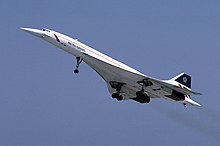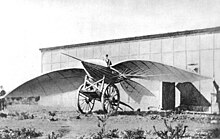Ambitious research programs in the bio-medical field are set to bring in revolutions: not imminent but sure enough.
Courtsey : Pictures from wikipedia
1.Direct conversion of quiescent cardiomyocytes to Pacemaker cells by expression of Tbx-18
DARPA (Defense Advanced Research Projects Agency, U.S.A) is asking a rebellious question about RAM; no it is not about the familiar Random Access Memory, but Restoring Active Memory. Or in simpler terms the question is can we reverse memory lapse? In soap operas sudden memory loss of a key character is a trick to raise TRP when the story reaches a cul-de-sac. But DARPA has more serious concerns. Its focus is on soldiers who have suffered severe traumatic brain damage and as consequence lost memory. Many in the scientific fraternity are skeptical but a few are optimistic and would like to give it a try. Research teams at University of Pennsylvania and University of California @ Los Angeles have decided to jump in. The first step of course will be neuronal mapping of the brain and both teams feel it will be advantageous to start with epileptic patients. Ultimately DARPA wants tiny implantable devices that can RAM.
In matters of heart the attempt is to get away from the implantables and substitutes. Could we browse around in body's own toolkit and come up with mix and match tricks? Cardiomyocytes are heart muscle cells. It is known that the human development Factor T-box-18, (a gene necessary for the development of pacemaker cells in the heart) has the power to reprogram ventricular cardiomyocytes to pacemaker cells. Hu et al are exploiting this possibility, a biological alternative for an implantable pacemaker. In a recent report they indicate that this indeed is possible. Hu and team have conducted experiments on pigs with induced cardiac block. Using a specially designed catheter they directly delivered the gene concoction via an intravenous injection to the left ventricle. Though the test animals registered improved performance, a lot more follow up studies are pending.
On a parrallel highway, as a part of stem cell therapy, Organoid technologies are being actively pursued. Organoid means organ-like . Pluripotent sem cells can turn into any cell line, liver cells or spleen cells, kidney cells, intestinal cells ....etc. And the amazing thing is when coaxed into such specialized cell lines, the cells organize themselves exactly as in that tissue. And if we can let them grow on appropriate Extra cellular matrix (ECM) then we would have a great organ model to study the progress of and possible remedies for diseases. The significance and value of such studies multiply infinitely if the patient's stem cells are used.
Tailpiece
Birbal was going ga-ga about the advantages of having a flying horse. Finally Akbar relented and agreed to fund the project. But on one condition: if the flying horse doesn't become a reality in 25 years, Birbal will be executed. Birbal agreed; his well wishers chided him. But Birbal was undaunted: he said "In 25 years a lot of things can happen. For example the emperor might die, I might die . And who knows even the horse might fly"
Of course, it took centuries,but it did fly , didn't it? And how elegantly!
Birbal was going ga-ga about the advantages of having a flying horse. Finally Akbar relented and agreed to fund the project. But on one condition: if the flying horse doesn't become a reality in 25 years, Birbal will be executed. Birbal agreed; his well wishers chided him. But Birbal was undaunted: he said "In 25 years a lot of things can happen. For example the emperor might die, I might die . And who knows even the horse might fly"
Of course, it took centuries,but it did fly , didn't it? And how elegantly!
 |
| Pegasus in Greek Mythology |
 |
| Concorde Supersonic |
 |
| Albatross II 1868 |
Courtsey : Pictures from wikipedia
1.Direct conversion of quiescent cardiomyocytes to Pacemaker cells by expression of Tbx-18
2.Y.F.Hu et al: Sci.Transl.Med. 6, 245ra94(2014)
3.Organogenesis in a dish: Modeling development and disease using organoid technologies
M.A. Lancaster & J.A. Knoblich Science: 345, 1247125(2014)
No comments:
Post a Comment